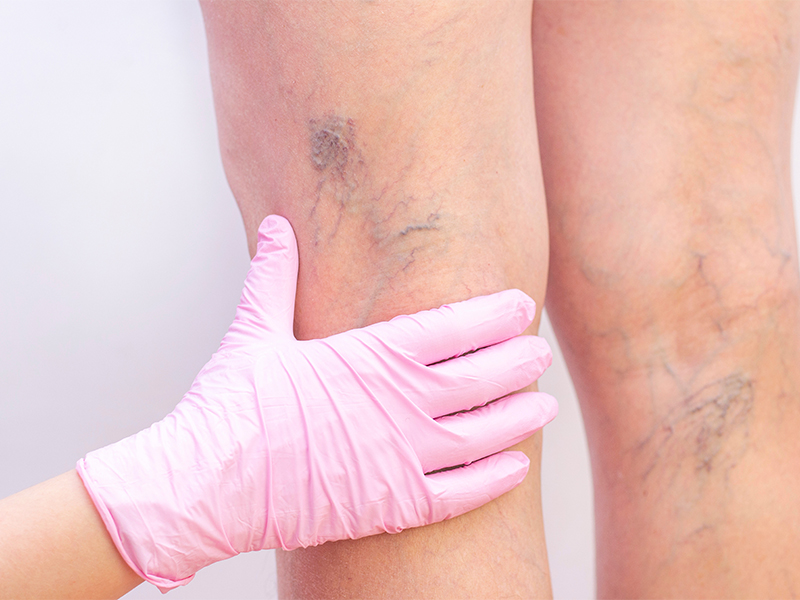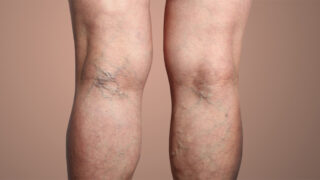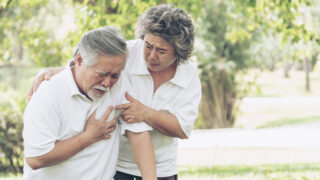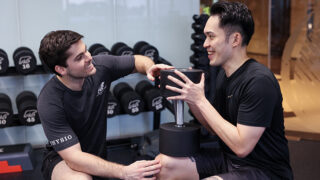Varicose veins are a common condition affecting as many as three in 10 adults – and they’re found more often in women. But is it something to worry about? DR JOHN TAN from The Vein Clinic tells us more about the condition and when it’s important to seek medical help and consider varicose veins treatments or a removal operation.
What are varicose veins?
Varicose veins are enlarged veins that are typically visible just beneath the skin’s surface in the legs. Telangiectasia (spider veins) are thin red or blue veins resembling spider webs while varicose veins are larger, twisted and protruding veins.
Patients suffering from varicose veins may experience aching, heaviness or discomfort in the legs. An itchy or burning sensation may also be present in the affected area along with muscle cramps or restless legs at night.
In more severe cases, the patient may develop eczema and thickening of the skin on the ankle which may progress to skin ulceration.

Do they require treatment?
Not all cases of varicose veins require treatment and some people choose not to undergo a varicose vein removal operation. Spider veins without any significant discomfort is mostly a cosmetic concern and not a severe medical condition.
If you do experience symptoms like aching legs, swelling, itching or night cramps that are frequent or severe you should seek medical attention as soon as possible.
Patients with large varicose veins should see a doctor and consider treatment as these can progress over time, becoming increasingly painful and unsightly. Left untreated, they may cause eczema, ulcers or bleeding and require more extensive treatment later.
What are the treatment options available?
It depends on the size and type of veins. For spider veins, injection sclerotherapy may be the best treatment option. In this procedure, a small amount of a specialised medicine is injected directly into the affected veins. This destroys the inner lining of the vein, causing it to collapse and be reabsorbed by the body. This treatment is relatively quick and comfortable and usually takes just 10 to 20 minutes per session. Patients may require several sessions spaced several weeks apart, and the treated veins will gradually fade over time.
For varicose veins, endovenous closure techniques are an excellent treatment option. This minimally-invasive treatment does not require surgical incision, general anaesthesia or hospitalisation. The procedure involves introducing a fine wire into the affected vein through a small puncture in the skin. The wire is then used to cauterise the vein with either a laser or radiofrequency. Physicians may also use medical glue to seal the vein by introducing a small catheter directly into the vein.
These modern techniques provide effective, quick and hassle-free treatments for varicose veins. Most patients can return to their daily activities within the same day or up to one day after treatment. Although risks and side effects are minimal, patients may experience some mild swelling, bruising or redness around the treated area.
Are varicose veins preventable?
This may not always be possible, but simple lifestyle changes and preventative measures can potentially delay the onset of varicose veins. Regular exercises, especially leg-focused ones, will strengthen veins and improve circulation. Obesity can also exert significant pressure on the legs and is known to result in spider veins.
The Vein Clinic
#11-08 Paragon, 290 Orchard Road
6245 6666 | theveinclinic.com.sg
This article first appeared in the October 2023 edition of Expat Living. You can purchase the latest issue or subscribe, so you never miss a copy!
To make the most of living in Singapore, read our latest City Guide here for free!
Don't miss out on the latest events, news and
competitions by signing up to our newsletter!
By signing up, you'll receive our weekly newsletter and offers which you can update or unsubscribe to anytime.



